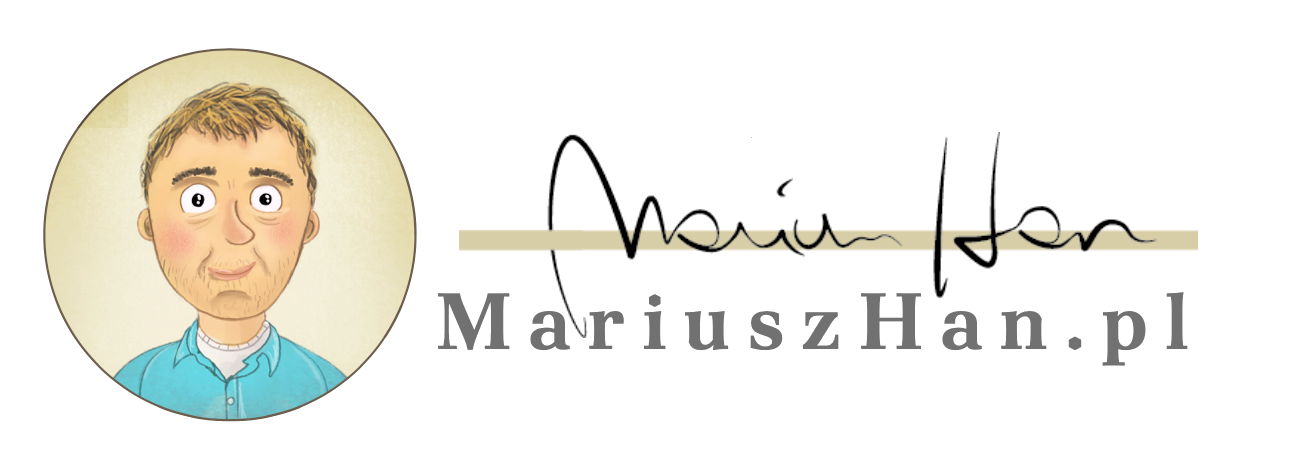Media technologies have infiltrated and developed in every area of our social life. Today, people spend many hours a day writing, sending and receiving sms messages, listening to the radio for music and news, watching television shows and movies, searching the Internet and playing video games. The questions and theoretical reflections raised over the (omni) presence of media technology in our individual and social lives form the basis of what I refer to as “media studies.”
During the 1950s and 1960s, John Culkin, S.J., Marshall McLuhan, Harold Adams Innis, Edmund Carpenter, Walter Ong S.J., and others created the movement called “Media Literacy.” This movement, according to Lance Strate (2007, p. 28), Professor of Communication and Media Studies at Fordham University in New York, has been concerned with: education and schooling, and with practical approaches to educational and media policy, to teaching and curriculum development, to developing mastery in media production and/or instilling a critical approach to media reception.
According to Strate, media is taken to mean all forms of human communication: oral communication (direct and personal contact, radio program, and others…), writing (books, press journalism, and others…), and visual (television, advertising, Internet, and others…). He defines literacy as the ability to read, write and also create. So media literacy, broadly defined, is the ability read critically all forms of media as well as being able to create and communicate in those forms.
John Culkin, S.J. (1928-1993)
One of the first educators promoting media literacy and media education in American schools is John Culkin, S.J. (1928-1993). He wanted Americans to be media literate and his idea was to teach students about media literacy in school as a part of the educational system. Culkin believes that it is necessary to create a new method to learn and teach about the media. He sees radio, photography and television as separate objects of study and he tries to address their individual uniqueness as well as combine media literacy with the more traditional literature and arts (Moody, 2011).
In 1964, John Culkin, S.J., came to Fordham University. In 1967, he “recruited Dr. McLuhan to come from Canada and join the faculty for a year. He was then emerging as an internationally known intellectual figure for his new ideas and riddle-like statements” (Lambert, 1993). During 1967-1968, John Culkin, S.J. and Marshal McLuhan collaborated on works exploring the implications of the new electronic media and media’s impact on interpersonal and social communication. In 1969, John Culkin founds the Center for Understanding Media, Inc. in Greenwich Village. This Center is created to teach everyone about the media. Culkin believes that the new media can make people better listeners and, more importantly, better learners. In order to understand the new media, people need to understand culture and vice versa. One cannot understand contemporary culture without understanding new media. Indeed, it is no longer sufficient to think of being literate as being able to read and write. Culkin recognizes that the monopoly of print culture was over and it was time to wake up and accept the fact that new media technologies demands a new language – a new literacy – from teachers and students. I call this the “beginning” of media literacy.
Marshal McLuhan (1911-1980)
McLuhan’s book, The Mechanical Bride: Folklore of Industrial Man (1951) is a critical study of popular culture. His second book, The Guttenburg Galaxy, discussed below, came 11 years later.
In 1960, Edmund Carpenter and Marshall McLuhan edited Explorations In Communications. In the book, Edmund Carpenter (1960, p. 218) contributes an essay where he tries to define the relationship between new media, language itself and the emerging culture:
English is a mass medium. All languages are mass media. The new mass media – film, radio, television – are new languages, their grammars as yet unknown. Each codifies reality differently; each conceals a unique metaphysics. Linguists tell us it’s possible to say anything in any languages if you use enough words or images, but there’s rarely time, and natural course is for culture to exploit its media biases.
In 1962, McLuhan wrote The Gutenberg Galaxy: The making of typographic man, a pioneering study in the fields of oral culture, print culture, cultural studies and media ecology. In his writings, McLuhan (1962, 1964) is not a pessimist about the coming changes; rather he attempts to identify and explain the effects of the changes in communication technology. He recognizes that electronic media creates a “global village” on a global scale where time and space are transcended. For McLuhan, the essential problem is that this new media makes on those communicating. He recognizes electronic media expansion as the epochal breakthrough event that it is.
McLuhan (1962) believes that these changes were breakthroughs on the level of the Copernican revolution in which the heliocentric theory challenged the assumption that the earth was the center of the Universe (Levinson, 1999, p. 81). McLuhan’s early and prescient realization changed the way of the world saw itself and, early on, he saw consequences that are only becoming clear to the rest of us in these days. For example, we live in a global village thanks to the breath-taking spread of the reach of our communications. Media communication creates a global village that now has global responsibilities.
Today, living with the World Wide Web (WWW), we actually experience the “global village” not as a McLuhan prophecy, but as a daily cultural, sociological, and political reality. McLuhan notes a parallel between Gutenberg’s moveable type – which opened the doors of the printed word to the world at large and ushered in the Renaissance – and electronic media where the old culture – the culture of the word – is transfigured into a visual culture determined by electronic culture.
In Understanding Media: The Extensions of Man (1964), McLuhan recognizes a new electronic era where “the medium is the message.” In the book, he argues that media affect human life and society in basic ways, media creates new and specific languages, and each medium creates a different level of participation. Indeed, each medium not only delivers information, but the characteristic of each medium creates its own symbolic system. Each medium has a different language to stimulate and engage human life and creates a new level of participation in social, cultural and political environment in new context (Fry&Lewis, 2008, p. 4). McLuhan (1967) continued this reflection in his next work, The Medium is a Message: An Inventory of Effects.
Harold Adams Innis (1894-1952)
One cannot write about McLuhan without mentioning Canadian Professor Harold Adams Innis (1894-1952), a political economist from the University of Toronto and a colleague of Marshall McLuhan. They both study the effect of communication media. Innis wrote several influential books that had a great impact on McLuhan: The Fur Trade in Canada: An introduction to Canadian Economic History (1930), Empire and Communication (1950) and The Bias of Communications (1951) and Changing Concepts of Time (1952). McLuhan and Innis both complement and support each other’s ideas about communication technology, even though sometimes they had conflicting opinions. Commenting on their mutual support and differences of opinion, James W. Carey (2005, p. 200) writes:
Both McLuhan and Innis assume the centrality of communication technology; where they differ is in the principal kinds of effects they see deriving from this technology. Whereas Innis sees communication technology principally affecting social organization and culture, McLuhan sees its principal effect on sensory organization and thought. McLuhan has much to say about perception and thought but little to say about institutions; Innis says much about institutions and little about perception and thought.
John Pungente, S.J. (1939-)
John Pungente, S.J. is Director of the Jesuit Communication Project in Ontario. As a major promoter of media literacy in Canada, he deserves mention. He is co-author of the book, Media Literacy: A Resource Guide which was written for the Government of Ontario in 1978. In this work, Pungente (1989) and other educators define 8 key concepts for media literacy: 1. media literacy deconstructs complex images to discover the reality behind the artifice; 2. media constructs our reality because it forms the bulk of our observations and experiences of the world; 3. we as an audience need to deal with massive amount of media created information; 4. media is a big business and it needs to make money; 5. media contains ideological and value messages; 6. media have real world social and political implications; 7. Form and content are closely related in media. Each medium has its own language and codifies reality in its own particular way; 8. each medium has its own form of beauty.
W. James Potter (1950-)
Professor W. James Potter (2005, p. 22) from the University of California at Santa Barbara supports an educational emphasis on media literacy especially addressing the question of violence in the media. He has written many scholarly articles and fifteen books on the topic. In one of them, Media Literacy, he defines media literacy as:
[a] set of perspectives that we actively use to expose ourselves to the media to interpret the meaning of the messages we counter. We build our perspectives from knowledge structures. To build our knowledge structures, we need tools and raw material. These tools are our skills. The raw material is information from the media and from the real world. Active use means that we are aware of the messages and are consciously interacting with them.
Potter (2005) supports his definition saying that media literacy also, “requires that we acquire information and build knowledge in more than just cognitive dimension but also to consider information from emotional, aesthetic, and moral dimensions” (p. 24). Media literacy, then, teaches more than academic principles. It introduces us to complex life skills to deal with our media culture. Without media literacy, he maintains, we would be as helpless as a traditionally illiterate person is in a print-focused culture. We would be lost in our media-mediated world.
Renee Hobbs (1958-)
One of the current experts in the field of media literacy and education is Renee Hobbs at Temple University. She founded the Media Education Lab at Temple. She is also co-founder of the Alliance for a Media Literate America (AMLA). According to her Temple biography, Renee Hobbs “created the first national-level teacher education initiative on this topic in the United States at the Harvard Graduate School of Education in 1993.” She studies the impact of youth media production and the role of media and technology in teaching and on the learning process for young people, especially in public schools. She believes that media literacy education is one of the best tools to understand our present world and makes us more aware of the media “onslaught” we call the digital media world. Media literacy education is a tool used to create the quiet space necessary in order to understand our lives in our instantaneous, cluttered, and noisy media world.
Rene Hobbs (2004) defines media literacy as the process of: “accessing, analyzing, evaluating and creating messages in a wide variety of forms. (…) And it’s also evident from this portrait that media literacy is not separate subject, but integrated into the English language arts, social studies, health and fine arts curricula” (pp. 24-28). She believes that everyone need these skills to find the path through a world in which media conglomerates – who hold a majority share of media outlets – take care of their own interest for the sake of the bottom line. Their manipulation, persuasion, advertising and propaganda are not directed by altruistic motives. Much, perhaps most, of media is a for-profit endeavor with money calling the shots.










